How important is downspout placement and roof drainage in preventing water damage? At Maupin Roofing, we like to say: it’s not just about keeping water off your roof—it’s about making sure it knows where to go once it gets there.
When rainwater isn’t properly directed, it doesn’t just disappear. It finds its way into basements, under foundations, behind siding, and into places it has no business being. The good news is that most of that damage is preventable, but only if your drainage system is doing its job. Below, we’re breaking down 15 best practices to make sure your downspouts and roof drainage are set up to protect your home from the top down.
1. Always Point Downspouts Away From the Foundation
This might sound obvious, but you’d be surprised how many downspouts fail to send water away from the house. That’s simply asking for trouble, because water that sits right next to your house has a way of sneaking into places it doesn’t belong, causing issues such as basement flooding and water damage in crawl spaces, which can also indirectly compromise your home’s energy efficiency.
So, rule #1 is to extend your downspouts at least 4-6 feet away from your home’s foundation. You want the water flowing away quickly. If your yard slopes toward your house or building foundation, we recommend things like extensions, splash blocks, or underground piping to guide it out safely.
2. Get the Right Gutter Slope
If your gutters aren’t sloped right, water will end up accumulating there. That’s bad news because stagnant water weighs down the gutters, invites mosquitoes, and eventually spills over.
The fix is to make sure your gutter system slopes gently toward the downspouts, about 1/16 to 1/8 inch per foot. Too steep, and water zooms past debris without carrying it out. Too flat, and it just sits there without moving. A well-sloped gutter keeps the flow steady and keeps your drainage system from getting overwhelmed in heavy rain.
3. Don’t Skimp on the Number of Downspouts
The number of downspouts you have is just as important as proper downspout placement. For example, if you have a big roof with only one or two downspouts doing all the work, they’re likely overwhelmed. A good rule is one downspout for every 30-40 feet of gutter. The larger your roof, the more downspouts you need. Additionally, consider your property’s layout when deciding on how many downspouts you should use.
4. Use Downspout Extensions
You know those little elbow pipes that stick out from the base of your downspout and shoot water away from your house? They’re important. Without them, water drops straight down, which erodes your soil and sneaks into the crawlspace. You can get downspout extensions in flexible plastic, decorative stone-style diverters, or even underground drain lines that disappear into your lawn.
5. Don’t Let Downspouts Direct Water to Hard Surfaces
When water flows directly onto hard surfaces, water pools, freezes in winter, creates slippery spots, or finds its way into tiny concrete cracks and starts breaking things apart as time passes. To prevent this, make sure you have an optimal downspout placement so that they’re emptying water into grassy or gravel-filled areas. Or, you can get those extensions going underground so the water doesn’t ruin your concrete, brick, or asphalt.
6. Anchor Your Downspouts
Winds can get intense, and if your downspouts are only held on with one loose bracket or nailed into rotten wood, they can rattle loose or fly off during a storm. That’s why, aside from proper placement, proper gutter downspout installation is also extremely important.
Use study brackets spaced out about every 4 feet and make sure they’re screwed into solid framing. If your siding is soft or warped, use longer fasteners and consider backing plates.
7. Keep Gutters and Downspouts Clean
Improper downspout placement isn’t the only thing that can cause issues. In fact, clogged gutters and downspouts can lead to a host of problems. Leaves, twigs, acorns, mud, and other debris pile up quickly, especially if you have trees nearby and you forget to do regular cleaning.
Prevent clogging by having a well-maintained gutter system year-round. Do gutter maintenance at least twice a year, more often if you have foliage nearby. While you’re up there, remove debris and flush your downspouts with a hose to make sure nothing’s stuck. If the water backs up, it’s time to clear the clog. Alternatively, you can also call in someone with a gutter or plumber’s snake.
8. Use Underground Drain Lines
Not a fan of the appearance of long plastic extensions sticking out into your yard? There’s another option. You can route your downspouts directly into underground PVC or corrugated pipe that runs out to a curb outlet or dry well.
These systems hide the drainage setup and work great for properties with limited space. Just make sure you install a cleanout or pop-up drain head so you can access it if it ever clogs.
9. Add Conductor Heads to Combine Flows Without Flooding
Got a spot where two gutters feed into the same downspout? That’s a lot of water hitting one spot. Instead of forcing it all through a small pipe, we recommend adding a conductor head (also called a leader head or scupper box). These give the water room to slow down before flowing freely down the pipe. It helps avoid splashback, reduces pressure on the system, and helps rainwater drain effectively.
10. Harvest Rainwater
To prepare for summer droughts, consider harvesting rainwater. Rain barrels can take your downspout water and store it for the dry days. Just attach a diverter at the top of your downspout that directs rainwater into a barrel with an overflow outlet. You can then use that collected water for gardens, potted plants, or even washing your car. It’s free water, and it keeps excess water from flooding your yard.
11. Use French Drains Where Soil Stays Too Wet
Installing gutters and downspouts protects your home from water-related damage, but sometimes, they still need some extra help. For example, if some of your gutter downspout locations are a bit low-lying or they’re near a spot that always appears soggy, a French drain might be the answer.
Basically, it’s a trench filled with gravel and a perforated pipe that carries water away underground. It’s especially helpful in clay-heavy Oklahoma soils that don’t drain well. A downspout can feed directly into a French drain, giving water a safe, slow path out of the area.
12. Don’t Let Downspouts Overlap or Cross
It sounds odd, but we’ve seen it: downspout placements where they wrap around each other and dump into another downspout halfway down. That can lead to backups, splashing, and poor drainage. Proper downspout placement matters, so make sure to keep every downspout independent with its own discharge route. Avoid combining pipes unless you have a properly designed box or header to slow the flow.
13. Place Splash Blocks to Keep Water From Digging Ditches
Those concrete or plastic slabs you see under downspouts help slow down the water flow and spread it so it doesn’t dig a trench in your yard and lead to issues like soil erosion or standing water. They’re helpful if you don’t want to deal with extensions or if your yard already slopes nicely. Just make sure the splash block is tilted slightly away from your home so it doesn’t accidentally send water where you don’t want it.
14. Watch for Signs of Trouble After Heavy Rainfall
After a big storm, check if there’s water pooling next to your foundation, if your downspouts are still directing water away from your home’s foundation, and if there’s any visible exterior damage. You should also make sure that water isn’t spilling over the gutter edge and that no downspouts have blown loose. Catching these issues early can prevent costly repairs.
15. Know When to Bring in the Professionals
Some drainage system problems are easy enough to fix on your own, especially if they were installed correctly in the first place and you just need to make a few tweaks. Other issues, though? They might not be so simple.
Maupin Roofing has been helping Oklahoma homeowners get their roofs and drainage systems working right for over 35 years. With our home exterior services, expect careful planning, professional installation, and proper gutter downspout placement. This way, you won’t have to worry about improper drainage, even in the face of heavy rainfall.
Frequently Asked Questions
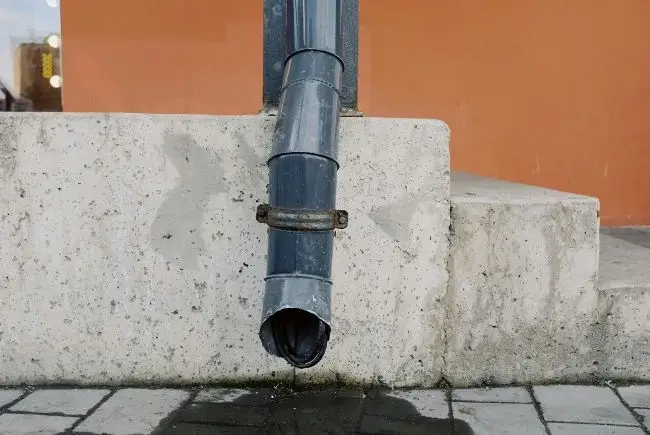
1. How do I know if my home has proper drainage?
You’ll usually find out the hard way if your home doesn’t. If rainwater tends to pool near your foundation, or if you’re constantly dealing with flooded basements or soggy landscaping after a storm, it’s a sign that your drainage setup isn’t doing its job. Proper drainage means water gets off your roof, down the gutters, and out away from your house without soaking into the soil around your foundation.
2. Can poor downspout placement lead to mold growth inside the house?
Yes, it can. If downspouts aren’t placed or angled correctly, water can end up sitting too close to your exterior walls. That moisture can seep in, especially through cracks or porous materials near the base of your home. Once water gets inside, it doesn’t take long for mold growth to start, especially in humid months.
3. How does gutter length affect drainage performance?
Longer gutter runs without enough downspouts can cause water to back up and overflow during heavy rain. That overload can stress your fascia board, cause your gutters to sag, or even rip the whole setup off the house. If you’ve got a long stretch of gutter and only one downspout, you might want to break it up with an extra one, or even consider larger gutters that can handle more water load without spilling over.
4. What type of gutter material is best for homes in Oklahoma?
It really depends on your budget and how long you want the system to last. A lot of homeowners around here go with aluminum because it’s affordable and won’t rust. But if you’re looking for something tougher, galvanized steel is a great option. It’s strong, holds up well in hail, and stands up to the weather swings we get in Oklahoma. Just keep in mind it can rust if the protective coating wears off, so maintenance is important. If you want a longer-lasting system, steel or copper are solid choices.
5. What’s the difference between K-style gutters and half-round ones?
K-style gutters are what most people in Oklahoma have on their homes. They have a flat back, a decorative front, and can hold a lot more water than half-round ones, which makes them better for handling heavy rain. Half-round gutters, on the other hand, are more rounded, and while they look nice on older or historic homes, they don’t carry the same water load as K-style gutters. If you’ve got a big roof or live in an area that gets a lot of storms, larger gutters in the K-style shape usually work better to channel water efficiently without overflowing.
Need Help With Roof Drainage or Downspouts? Talk to Maupin Roofing!
Our crew offers gutter and downspout services, including strategic downspout placement, expert repairs, and regular maintenance. If you’re worried about installation issues or structural damage, we’ll take a look, figure out what’s going on, and get your home set up to handle the weather.

Green Roofs for Commercial Properties: Suitability, Types & Benefits
Green roofing systems replace or layer over traditional materials with soil, native plants, and engineered drainage systems that allow the roof to become a living

Boosting Curb Appeal with Exterior Colors: 12 Color Combos to Try
Before anyone notices your landscaping or your roofline, they notice color, which is why boosting curb appeal with exterior colors is such a powerful move.
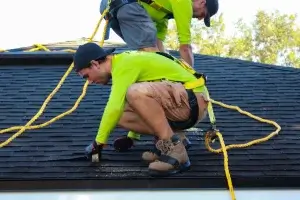
Residential Roof Maintenance Tips for Longevity
Your roof does more than cap off your home. It shields everything beneath it from Oklahoma’s heat, high winds, ice storms, and heavy rain. That’s
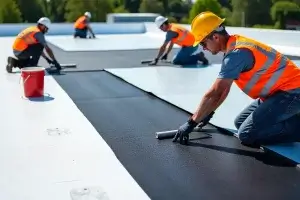
Modified Bitumen Roofs for Commercial Use: What to Know
Modified bitumen roofs for commercial use have become one of the most trusted options for flat and low-slope buildings for over a century. At Maupin
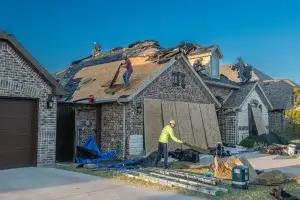
New Roof Installation Guide for Homeowners
As pros in the roofing industry, we know what really goes into a well-built roof and what can go wrong when corners are cut. A
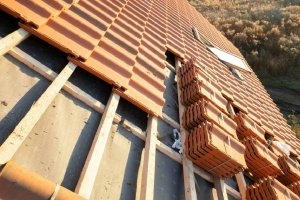
Best Time to Install a New Roof in Oklahoma
Something we often see is homeowners waiting too long to replace a worn-out roof, only to get caught in the middle of inclement weather or

